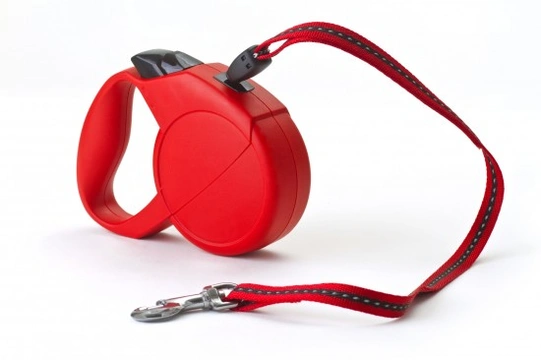
Dogs and retractable leads - How to use them safely and correctly
Retractable leads for dogs have in many ways revolutionised the ways that we can walk our dogs, and provide a wide range of options for dog owners above the rather binary equation of simply on the lead or off the lead. While a retractable lead extended to its full limit does not offer the dog owner anywhere near the same degree of control as a short, non extending leash does, it can make all the difference to the owners of dogs that are prone to running off or chasing others when off the lead.
Extending and retractable leads can provide valuable opportunities for dogs that are prone to running off or failing to return when recalled to be able to explore the world around them with rather more freedom that simply walking to heel allows. Using a retractable lead for any type of dog can open up a range of options and provide greater freedoms for dogs of all types, but they do have their limitations.
Read on to learn more about how and when to use a retractable lead safely and appropriately.
More about retractable leads
Retractable leads usually extend to a full length of 15-20 feet, and can be locked into place when extended to a certain point. There are usually one or two button settings on the lead itself; you can keep the lead short, at the length of a normal lead, let it extend and retract according to how far your dog goes, or lock the lead in place at a certain length to allow your dog some freedom while preventing them from going further.
Different sizes and weights of retractable leads are made for different breeds and sizes of dogs, and picking the right size for your own dog is important. If the lead is too lightweight for the dog, the dog will be able to potentially snap the lead, while if the dog is too small for the lead, the recoil mechanism that retracts the lead may be too powerful, and jerk your dog’s neck. You would need a rather different retractable lead for say, a Husky and a Yorkshire Terrier, for instance!
How much control does a retractable lead provide?
While a retractable lead keeps your dog attached to you at a distance and on your radar, it is important to remember that a dog at the full extent of a retractable lead is not fully under your physical control.
If your dog is walking to heel with the lead retracted so that it is short, you will have as much control as you would have with any other type of lead, but if the dog is 15-20 feet from you at the end of their rope, a lot can happen before you will get the chance to intervene! You should always keep a lookout for what is up ahead of your dog- for instance, roads and crossings, other dogs and people, or small animals. There is no magic button on your retractable lead that will reel your dog in at the first sign of trouble!
Do not use a retractable lead as a replacement for good supervision and management of your dog; you should use it to provide you with an extra option and to give your dog a little more freedom than they would be able to have on a short lead, but not in place of training or taking responsibility for your dog!
Limitations
Remember that with the lead extended, your dog may run into any of the usual obstacles and hazards that might present themselves if your dog was off the lead, and is likely to react accordingly! Your dog will still be able to approach other dogs or people that come within range of their lead, and may also be able to pick up scraps or scavenge, jump at smaller animals, or roll around in something unpalatable if you don’t keep your eyes open!
Remember also that a long lead can easily get caught up on corners and obstacles, and worse, potentially trip people up if your dog crosses their path or wraps themselves around their legs!
General usage
Some situations are excellent opportunities to use a retractable lead, whereas in other cases, a shorter lead is much more appropriate.
- If your dog is prone to running off, a retractable lead can be used to provide them with the opportunity to stretch their legs and sniff around more freely than a short lead will.
- If your dog needs to be kept on a lead, but has a walking pace rather faster than yours, a retractable lead can provide a better balance in terms of letting your dog move at their own pace while you move at yours.
- If your dog does not tend to listen to you all of the time or follow the recall command when it counts, a retractable lead can be used to keep your dog in place while you catch up to them.
- If your dog has a tendency to purse apparent prey, such as cats or rabbits, a retractable lead can help to keep other animals like these out in the open safe.
- If you wish to find an alternative to good training, supervision and management of your dog, however, a retractable lead is not a good pick.



